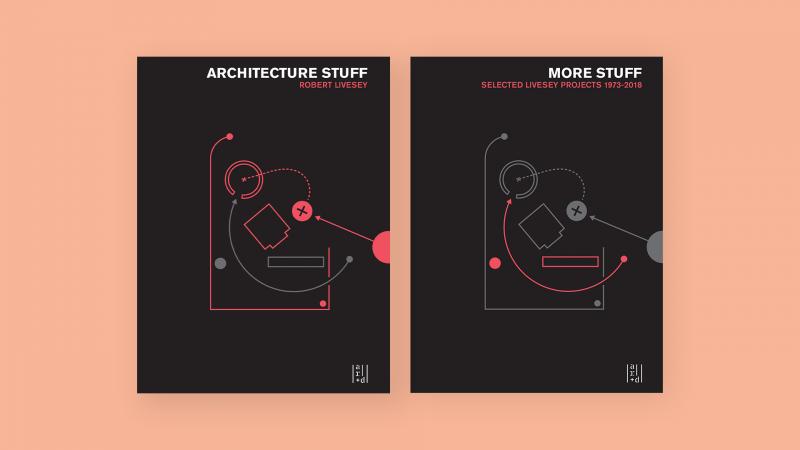Robert Livesey Publishes Architecture Stuff and More Stuff
Knowlton School Professor of Architecture Robert Livesey has published Architecture Stuff and More Stuff, a two-book set that explores a way of looking at architecture. Architecture Stuff examines seven seminal projects and shows how they might have been conceived with or without the design architect's intent. More a working method than a theory, the book deals with questions pertinent to designers as well as to critics of buildings. More Stuff then illustrates how the same sensibility and working method can be used in the design of buildings.
The seven buildings featured in Architecture Stuff are chosen for their breadth of styles and approaches to architecture, demonstrating that this approach to architecture can be applied to any building. Presented in reverse chronological order, the first project, Grace Farms, is a building by SANAA. Noted for its meandering river form and minimalist detailing, it is seen to be—among other things—a juxtaposition of orthogonal and sinuous forms. The second project is Villa Dall’Ava by Rem Koolhaas/OMA. Located in the Paris suburbs, the house is a transition from city to country. The third project is the Neue Staatsgalerie by James Stirling. The analysis shows how the 'bad boy' of architecture subverts conventional architectural tropes. Robert Venturi's Mother's House is shown to be a compressed stately manor full of architectural conceits. The Kimbell Art Museum by Louis Kahn can be understood as simple repetitive forms with elaborated elements that organize a diverse collection of spaces. Pierre Chareau's Maison de Verre is much more than types of transparency and mechanisation. One of its major themes is the use of 'L' shaped spaces to create spatial largese. Finally, St George's Bloomsbury by Nicholas Hawksmoor is a parish church swallowed by a classical temple. The critique exposes how the architect used that idea to juxtapose the clerical and the civic to develop the details in the building.
These are not singular idea buildings and, as a way of seeing architecture, there are overlapping themes in this collection. The history of architecture is a common theme, as is dealing with architecture's stasis. A dry sense of humor is always appreciated. What separates these buildings from any other building is the density of ideas presented.
More Stuff accounts for the same working method as a way to make architecture. Here Livesey illustrates 11 projects across the span of his career. Though often done in collaboration with others, in all cases he generated the design ideas. One of the key aspects of Architecture Stuff and More Stuff is that they are unpretentious and accessible and their projects are meant to illustrate that quality. Architecture can be serious and playful at the same time.
Architecture Stuff and More Stuff is available at Amazon and Barnes & Noble.


